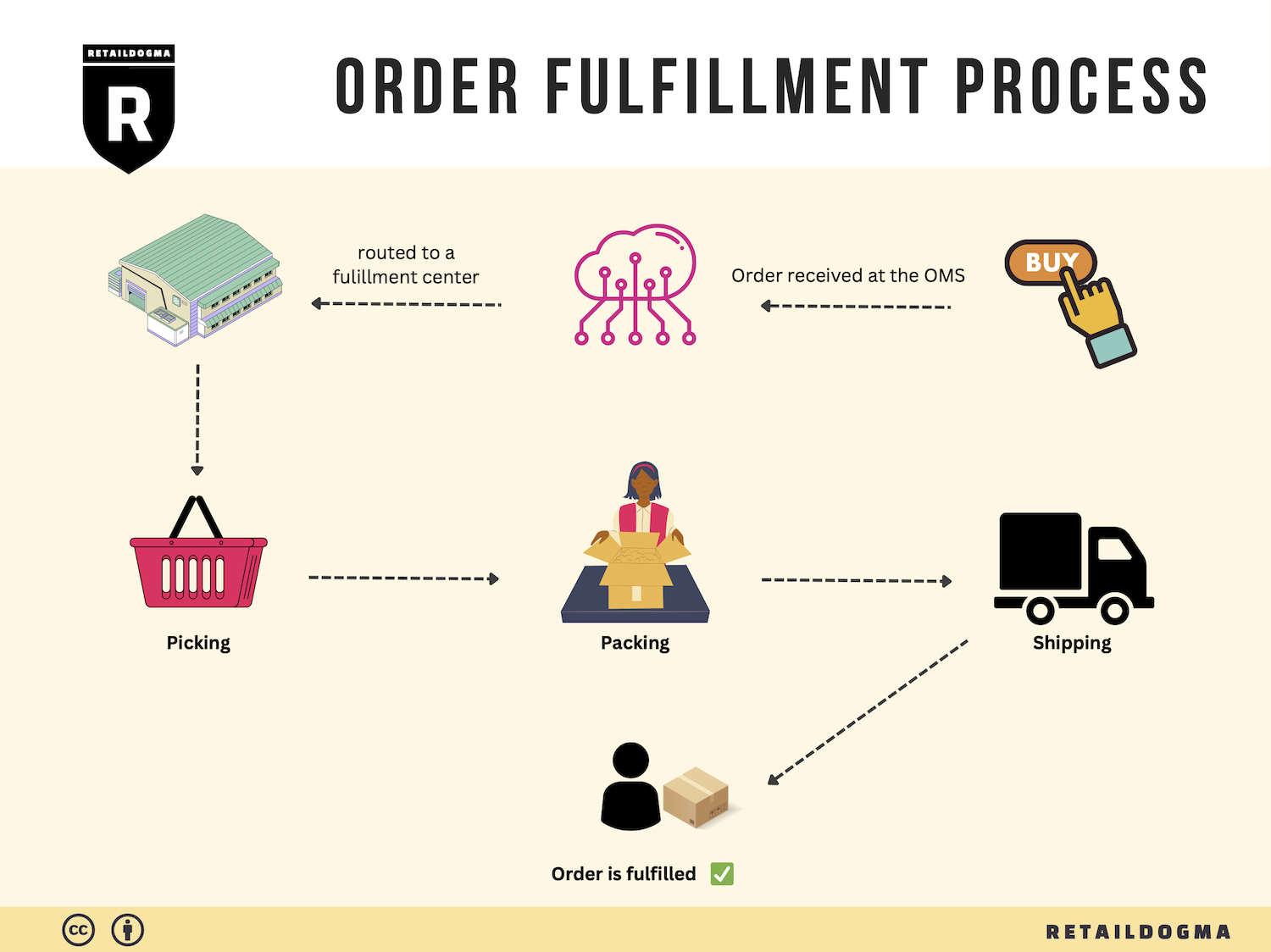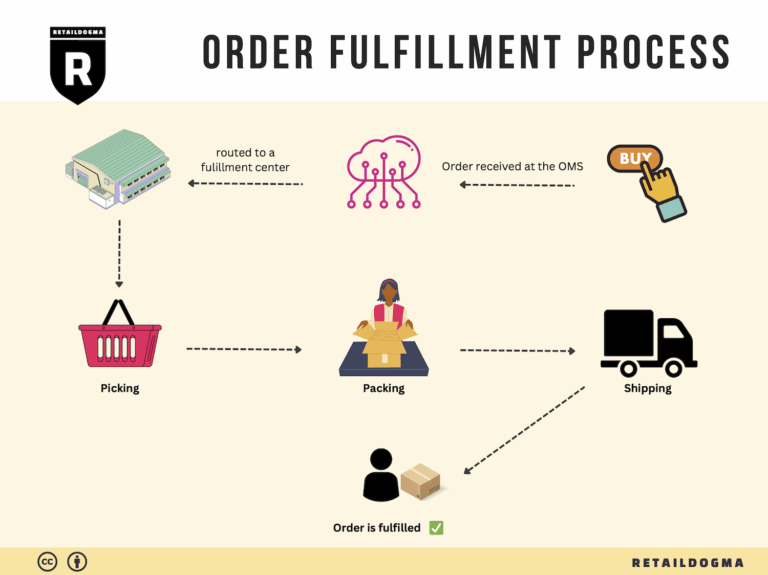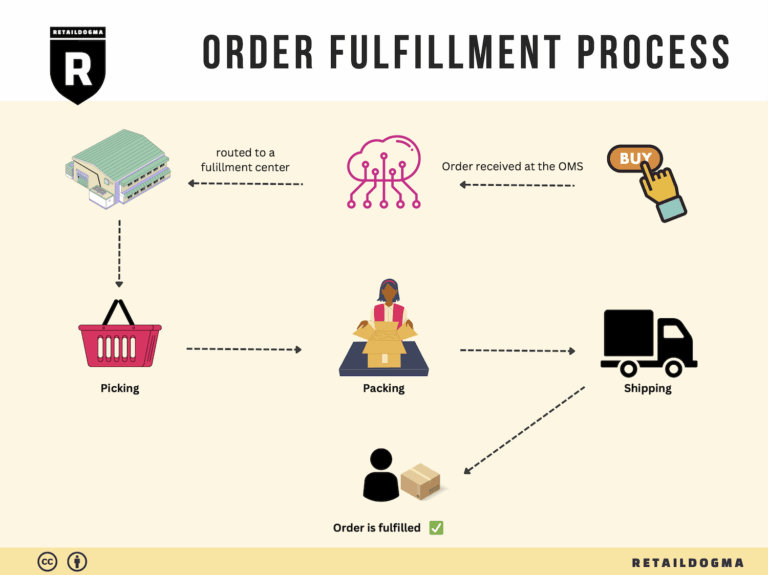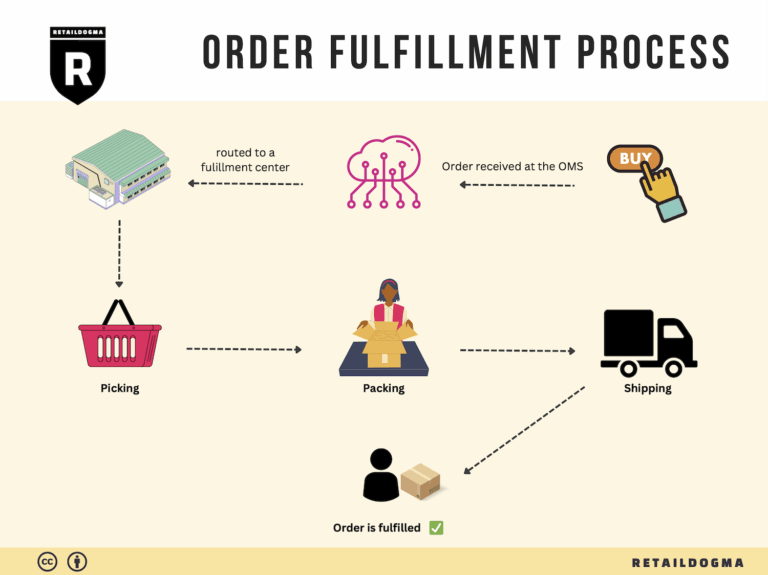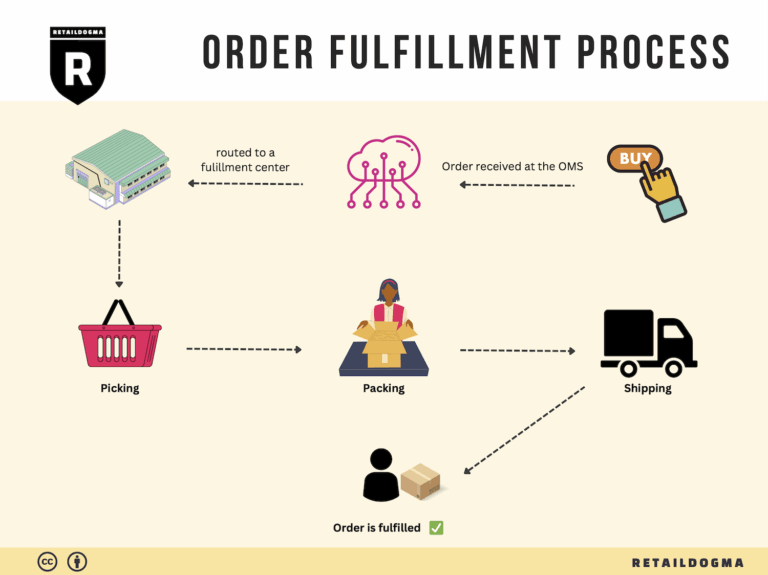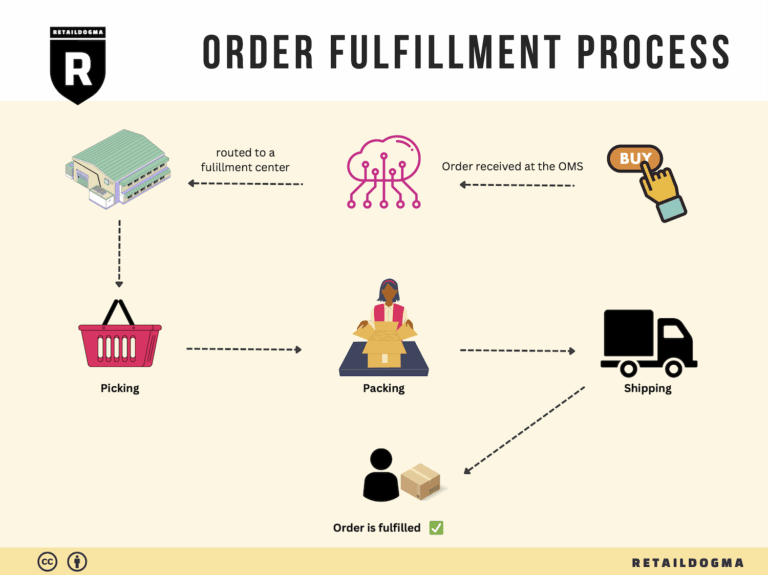Ecommerce Fulfillment Services: The Ultimate Guide (2025)
What is E-commerce Fulfillment? An Introduction for Growing Businesses
Understanding E-commerce Fulfillment
For many growing online businesses, the excitement of expanding sales can quickly turn into overwhelm when faced with the complexities of packing and shipping orders. The fulfillment process—getting a product from your warehouse to a customer’s doorstep—can become a daunting task that consumes valuable time and resources, diverting your attention from crucial growth strategies and customer engagement.
At its core, e-commerce fulfillment encompasses the series of steps involved in delivering a product to a customer. This includes receiving inventory, storing it, processing orders, packing, and shipping. As your business scales, the need for an efficient and reliable fulfillment strategy becomes essential. Understanding the various fulfillment models available, such as Third-Party Logistics (3PL) and Fulfillment by Amazon (FBA), is crucial for making informed decisions that align with your business goals.
This guide aims to demystify e-commerce fulfillment for entrepreneurs, operations managers, and business owners looking to streamline their logistics. We will explore different fulfillment models, detailing their unique advantages and how they can fit into your business strategy. You will learn about core fulfillment services such as inventory management, order processing, packaging, and shipping, and how these services contribute to a seamless customer experience.
Choosing the right fulfillment partner can be a transformative decision for your business. We will provide practical insights into evaluating potential partners, including factors to consider such as location, capabilities, technology integration, and customer service. Understanding pricing structures will also be a key focus, as it is essential to balance cost-effectiveness with service quality.
By the end of this guide, our goal is to empower you with the knowledge and tools to make smart, strategic decisions regarding your logistics. Whether you’re contemplating outsourcing fulfillment for the first time or looking to optimize your existing operations, this comprehensive overview will equip you with the understanding needed to enhance your e-commerce fulfillment strategy effectively.
What You’ll Learn In This Guide
- What is E-commerce Fulfillment? An Introduction for Growing Businesses
- The Order Fulfillment Process: From ‘Buy’ Button to Customer’s Door
- Comparing Fulfillment Models: In-House vs. 3PL vs. Dropshipping
- A Deep Dive into Amazon FBA: Pros, Cons, and Who It’s For
- Core Services Offered by Fulfillment Centers
- How to Choose a Fulfillment Partner: A 6-Point Checklist
- Understanding Fulfillment Pricing: A Breakdown of Common Fees
- Frequently Asked Questions (FAQs) about Fulfillment
- Conclusion: Is Outsourcing Fulfillment the Right Move for Your Business?
- Important Disclaimer
The Order Fulfillment Process: From ‘Buy’ Button to Customer’s Door
1. Receiving Inventory
The order fulfillment process begins with receiving inventory. This step involves the acceptance of products from suppliers into the fulfillment center. Upon arrival, products are checked against shipping documents to ensure accuracy in terms of quantity and quality. Key processes include inspecting for damage and verifying that the correct SKUs (Stock Keeping Units) are received.
Importance: Accurate receiving is critical as it establishes the foundation for inventory management. Errors at this stage can lead to inventory discrepancies, affecting order fulfillment and customer satisfaction. Properly received goods also allow for efficient storage and future picking.
Key Term: SKU – A unique identifier for each product, crucial for tracking inventory and managing stock levels.
2. Warehouse Storage
Once the inventory is received and verified, it is moved to designated storage locations within the warehouse. This step involves organizing products in a manner that maximizes space and facilitates efficient picking. Items may be stored on shelves, in bins, or on pallets, depending on their size and demand.
Importance: Effective warehouse storage is essential for optimizing space and ensuring that items are easily accessible for order picking. A well-organized warehouse reduces search time for products, leading to faster order fulfillment and lower operational costs.
Key Term: FIFO (First In, First Out) – A stock rotation method that ensures older inventory is sold before newer stock, minimizing the risk of obsolescence and spoilage.
3. Order Picking
Order picking is the next crucial step, where items are selected from their storage locations based on customer orders. Fulfillment centers typically utilize pick lists—documents or digital records that detail which items and quantities need to be picked for each order. Various picking methods exist, including single order picking, batch picking, and zone picking, depending on the volume and complexity of orders.
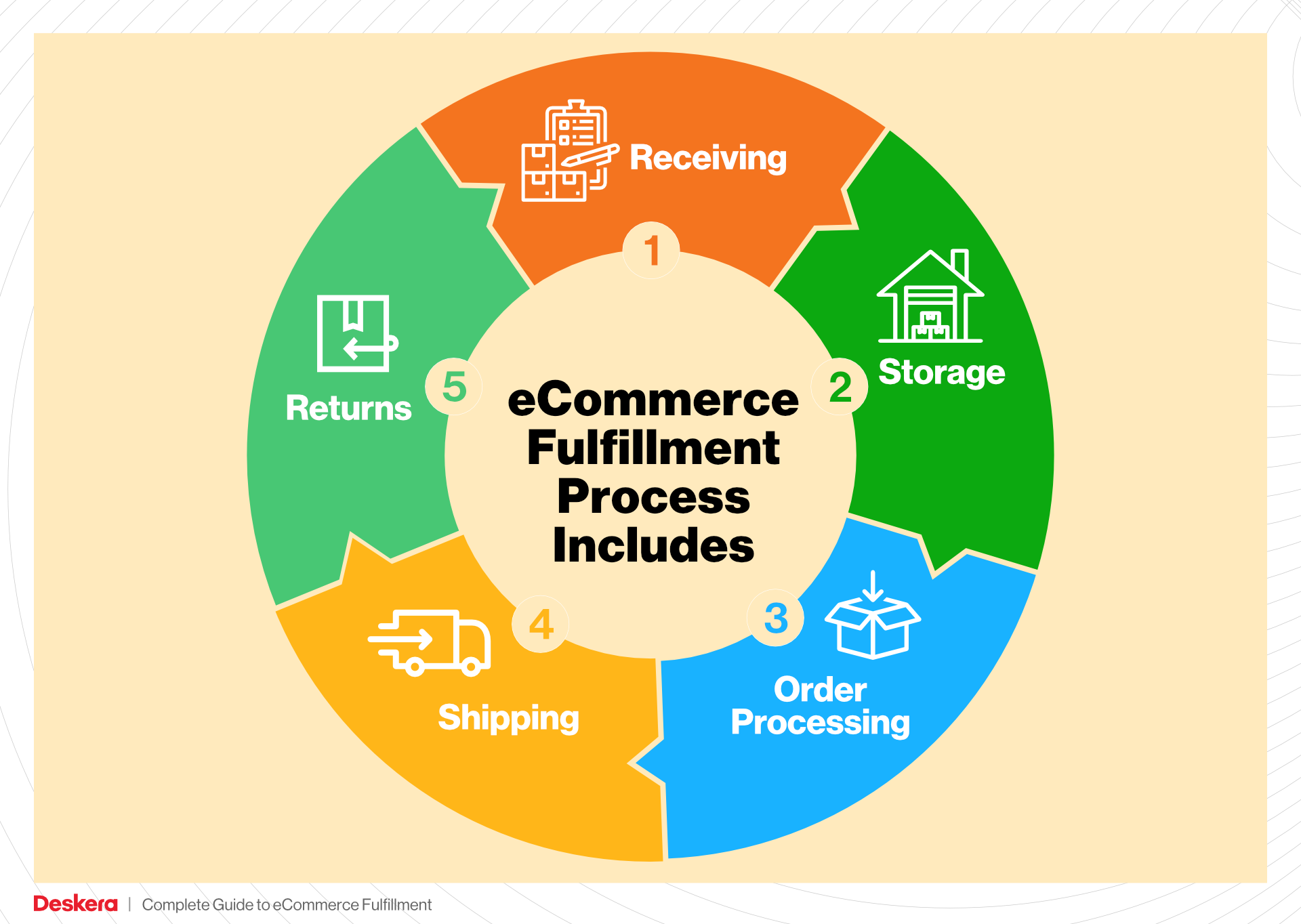
Importance: The picking process directly impacts the speed and accuracy of order fulfillment. Efficient picking minimizes errors and ensures that customers receive the correct products in a timely manner. Moreover, optimizing this step can significantly enhance overall warehouse productivity.
Key Term: Pick List – A document that guides warehouse staff in selecting the right items for customer orders, crucial for ensuring accuracy in fulfillment.
4. Order Packing
After items are picked, they move to the packing station, where they are prepared for shipment. This involves checking the picked items against the original order, packing them into appropriate shipping containers, and adding any necessary documentation, such as invoices or return instructions. Packaging must also comply with branding guidelines and shipping requirements.
Importance: Proper packing is vital to prevent damage during transit and to enhance the unboxing experience for customers. Efficient packing processes can also reduce shipping costs and minimize delays in delivery.
Key Term: Packing Slip – A document included in the package that lists the items enclosed, serving as a confirmation of the order and providing essential information to the customer.
5. Shipping & Delivery
The final step in the order fulfillment process is shipping and delivery. Once packed, orders are labeled and prepared for dispatch to the appropriate shipping carriers. This step includes selecting the best shipping method based on cost, speed, and customer preferences. Tracking information is generated and communicated to customers, allowing them to monitor their order status.

Importance: Timely shipping and delivery are crucial for customer satisfaction and retention. Efficient shipping operations reduce lead times and improve service levels, which are essential for competing in today’s e-commerce landscape.
Key Term: Last Mile Delivery – The final step of the delivery process, where the package is transported from a distribution center to the customer’s doorstep, often the most costly and critical part of the shipping process.
By understanding and optimizing each step of the order fulfillment process, e-commerce business owners and operations managers can enhance efficiency, reduce costs, and ultimately improve customer satisfaction. Whether utilizing an in-house team or partnering with a third-party logistics provider, mastering this process is essential for scaling sales and logistics effectively.
Comparing Fulfillment Models: In-House vs. 3PL vs. Dropshipping
Fulfillment Model Comparison
| Model | Who Handles Inventory | Best For (Business Stage) | Key Advantage | Key Disadvantage |
|---|---|---|---|---|
| In-House Fulfillment | Business Owner/Staff | Established businesses | Full control over operations and customer experience | High fixed costs and complexity |
| Third-Party Logistics (3PL) | 3PL Provider | Startups and growing businesses | Flexibility and scalability | Less control over inventory and processes |
| Dropshipping | Supplier/Vendor | New entrepreneurs and small businesses | Low startup costs and no inventory management | Lower profit margins and reliance on suppliers |
In-House Fulfillment
In-house fulfillment involves a business managing its own inventory, storage, and shipping processes. This model is most suitable for established businesses that have already developed their product lines and customer base. The key advantage of in-house fulfillment is the complete control it offers over the entire fulfillment process, including product quality, packaging, and customer service. Businesses can tailor every aspect of fulfillment to fit their brand and ensure a consistent customer experience. However, the downsides include high fixed costs associated with warehousing, staffing, and equipment. Additionally, as order volumes increase, managing logistics in-house can become complex and labor-intensive, potentially diverting focus from core business activities like marketing and product development.
Third-Party Logistics (3PL)
Third-party logistics (3PL) providers offer a flexible solution for businesses looking to outsource their fulfillment operations. This model is ideal for startups and growing businesses that may not yet have the resources or space to manage fulfillment in-house. 3PL providers handle inventory storage, order processing, packing, and shipping on behalf of the business. The key advantage here is scalability; as order volumes fluctuate, businesses can easily adjust their fulfillment needs without the burden of fixed overhead costs. Additionally, 3PL providers often have established relationships with carriers, which can lead to lower shipping rates. However, a significant drawback is the potential loss of control over the fulfillment process, which can affect product quality and customer service if not managed properly. Businesses must also ensure that their chosen 3PL aligns with their brand values and operational needs.
Dropshipping
Dropshipping is a fulfillment model where the retailer does not keep products in stock but instead transfers customer orders directly to a supplier or manufacturer, who then ships the products directly to the customer. This model is particularly appealing to new entrepreneurs and small businesses due to its low startup costs and minimal inventory management requirements. Since there is no need to invest in inventory upfront, businesses can test multiple products without significant financial risk. However, dropshipping comes with its challenges, notably lower profit margins and a heavy reliance on suppliers for product quality and shipping times. If suppliers experience delays or errors, it can directly impact the retailer’s reputation. Additionally, businesses have limited control over branding and packaging, which can dilute brand identity.
Conclusion
When selecting a fulfillment model, e-commerce businesses must consider their current stage, resources, and long-term goals. In-house fulfillment provides control but at a higher cost, while 3PL offers flexibility and scalability, making it suitable for a range of business stages. Dropshipping presents a low-risk entry point into e-commerce but requires careful management of supplier relationships to maintain customer satisfaction. Each model has its unique advantages and disadvantages, and the right choice will ultimately depend on the specific needs and strategic objectives of the business.
A Deep Dive into Amazon FBA: Pros, Cons, and Who It’s For
Understanding Fulfillment by Amazon (FBA)
Fulfillment by Amazon (FBA) is a service provided by Amazon that allows e-commerce sellers to store their products in Amazon’s fulfillment centers. When a customer places an order for a product, Amazon takes care of storage, packaging, and shipping. This service is particularly beneficial for e-commerce businesses looking to leverage Amazon’s extensive logistics network while focusing on product development and marketing.
How FBA Works
-
Setup and Inventory Management: Sellers begin by creating an Amazon seller account and registering for FBA. They then ship their products to Amazon’s fulfillment centers. Once received, Amazon takes over the inventory management, ensuring products are stored securely and are available for quick shipping.
-
Order Processing: When a customer orders a product, Amazon’s system automatically processes the order. They pick the product from the warehouse, package it, and ship it directly to the customer. This rapid processing is a significant advantage, especially for businesses aiming to provide quick delivery.
-
Customer Service and Returns: Amazon handles all customer service inquiries and return requests for FBA orders. This means sellers can focus on their core business operations without worrying about the logistics of customer support.
-
Multi-Channel Fulfillment: FBA also allows sellers to use Amazon’s logistics for orders from other sales channels, such as their own websites or other marketplaces, enhancing operational efficiency.
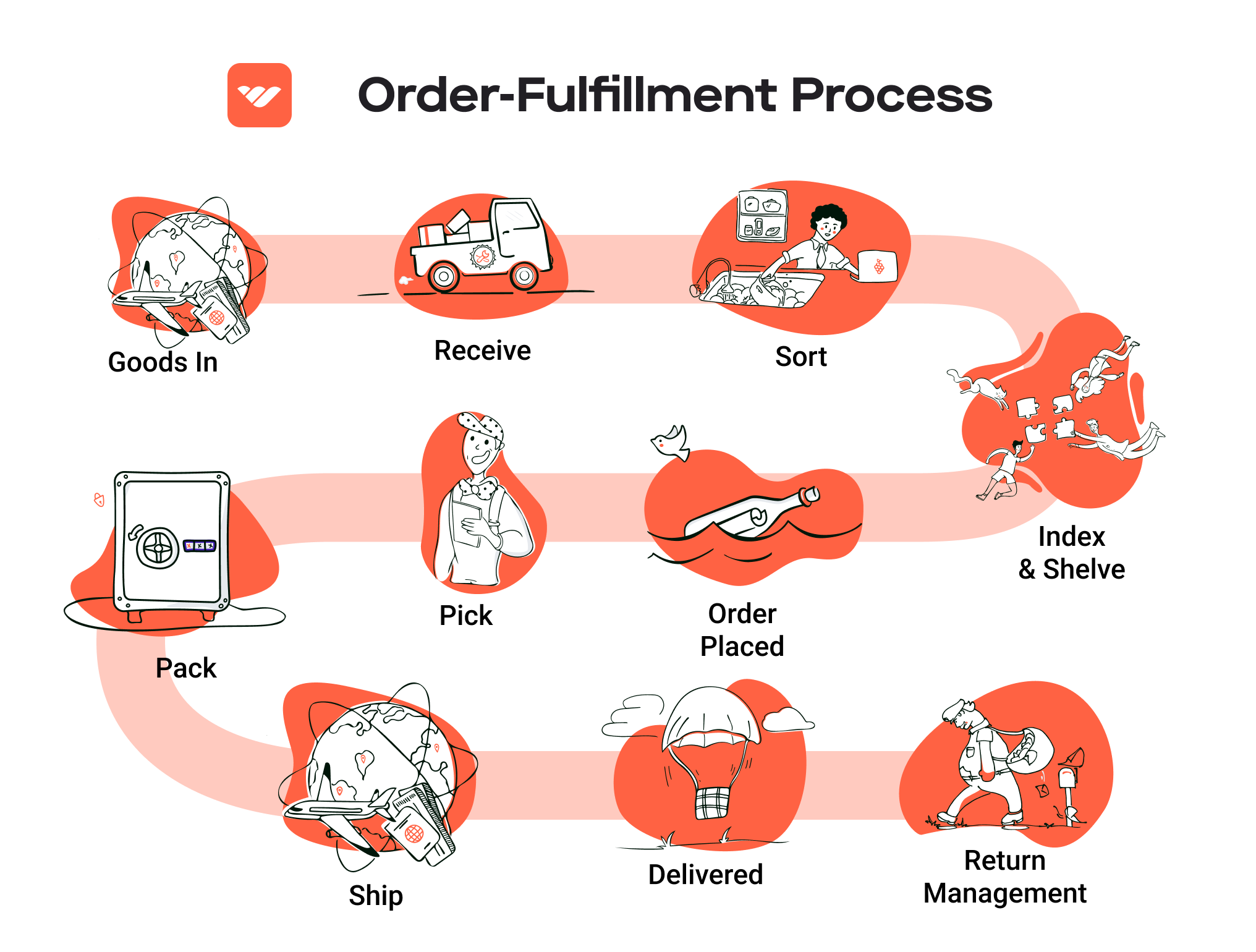
Pros of Using FBA
-
Prime Eligibility: Products fulfilled through FBA are eligible for Amazon Prime, which can significantly increase sales as Prime members tend to shop more frequently.
-
Customer Trust: Leveraging Amazon’s brand recognition and trusted customer service can enhance a seller’s credibility. Customers are more likely to purchase from sellers using FBA due to the assurance of quality service and reliable shipping.
-
Multi-Channel Fulfillment: FBA supports multi-channel fulfillment, allowing sellers to fulfill orders from various platforms (e.g., Shopify, eBay) using Amazon’s logistics. This capability helps streamline operations and reduces the burden of managing multiple fulfillment processes.
-
Scalability: FBA allows businesses to scale operations without the need for significant investment in warehousing or logistics. As demand grows, sellers can easily increase inventory levels without worrying about storage limitations.
-
Automated Shipping and Handling: Amazon automates the shipping process, which means sellers can focus on other aspects of their business, such as marketing and product development, rather than logistics.
Cons of Using FBA
-
High Fees: One of the most significant drawbacks of FBA is the cost. Sellers incur various fees, including storage fees for inventory stored in Amazon’s warehouses and fulfillment fees for each order processed. These costs can add up quickly, particularly for businesses with lower margins.
-
Strict Inventory Rules: Amazon has stringent inventory management rules, including requirements for labeling, packaging, and storage. Non-compliance can lead to additional fees or inventory being returned to the seller.
-
Commingling Risks: FBA products from different sellers may be commingled in Amazon’s warehouses. This can pose a risk for sellers, as it may lead to complications with product returns or customer complaints regarding product quality.
-
Loss of Control: By outsourcing fulfillment to Amazon, sellers relinquish some control over the customer experience, including packaging and handling. This could dilute brand identity if packaging does not align with the seller’s branding.
-
Potential for Inventory Limits: Amazon imposes limits on the amount of inventory sellers can send to their fulfillment centers, especially for new sellers or those with a history of poor sales performance. This limitation can restrict growth potential.
Who is FBA Best For?
Fulfillment by Amazon is best suited for small to medium-sized e-commerce businesses looking to scale without the burden of managing logistics. Here are some specific scenarios where FBA can be particularly advantageous:
-
New Sellers: Entrepreneurs just starting can benefit from Amazon’s infrastructure and customer base, allowing them to focus on building their brand and products rather than logistics.
-
Seasonal Businesses: Companies with seasonal spikes in demand can leverage FBA to manage fluctuating inventory levels without committing to long-term storage.
-
Brands with Established Products: Businesses that already have a proven product with steady sales can benefit from the quick fulfillment and Prime eligibility that FBA offers, further enhancing sales potential.
-
Multi-Channel Sellers: For businesses that sell across various platforms, FBA provides a streamlined solution for order fulfillment, reducing the complexity of managing multiple shipping processes.
-
Companies Seeking Growth: Sellers looking to expand their reach and scale operations can utilize FBA to tap into Amazon’s vast logistics network without heavy upfront investment in infrastructure.
In conclusion, Fulfillment by Amazon can be a powerful tool for e-commerce businesses looking to optimize their fulfillment processes and scale effectively. However, it is essential to weigh the benefits against the associated costs and operational challenges to determine if it aligns with your business goals.
Core Services Offered by Fulfillment Centers
Inventory Management & Warehousing
Inventory management and warehousing form the backbone of any effective fulfillment operation. Fulfillment centers provide businesses with designated storage space for their products, ensuring that inventory is organized, accessible, and efficiently managed.
What It Is:
This service involves the systematic tracking of inventory levels, orders, sales, and deliveries, along with the physical storage of goods. Fulfillment centers utilize advanced software to monitor stock in real-time, enabling businesses to maintain optimal inventory levels without overstocking or running out of key items.
Benefits:
For e-commerce businesses, effective inventory management translates to reduced costs and improved cash flow. By outsourcing warehousing to a fulfillment center, companies can avoid the high overhead associated with maintaining their own storage facilities, such as rent, utilities, and staffing. Furthermore, fulfillment centers often have sophisticated inventory management systems that can predict demand fluctuations, helping businesses avoid stockouts or excess inventory. This capability is particularly crucial during peak sales periods, such as holidays or promotional events, where demand can surge unpredictably.
Pick and Pack Services
Pick and pack services are integral to the fulfillment process, ensuring that orders are accurately assembled and shipped to customers in a timely manner.
What It Is:
This process involves selecting (picking) items from inventory based on customer orders and then packaging (packing) them for shipment. Fulfillment centers employ trained staff or automated systems to efficiently pick items from shelves and prepare them for delivery.
Benefits:
The primary advantage of pick and pack services is speed and accuracy. By outsourcing this function, e-commerce businesses can significantly reduce order processing times, leading to quicker delivery to customers. Additionally, fulfillment centers often implement quality control measures during the packing process to ensure that the correct items are shipped, reducing the likelihood of returns and enhancing customer satisfaction. This service is especially beneficial for businesses with high order volumes or a wide variety of SKUs, as fulfillment centers have the expertise and resources to handle complex order fulfillment efficiently.
Kitting and Assembly
Kitting and assembly services allow businesses to bundle multiple products into a single package, enhancing the customer experience and streamlining inventory management.
What It Is:
Kitting involves assembling different items into a single package or kit, often for promotional purposes or to create a new product offering. This can include anything from combining complementary products to creating subscription boxes. Assembly can also refer to putting together items that require some level of setup before they can be sold or shipped.
Benefits:
For e-commerce businesses, kitting and assembly services can provide a significant competitive edge. By offering bundled products, businesses can increase average order values and provide customers with a curated shopping experience. This service also allows for more efficient inventory management, as fulfillment centers can track kits as single SKUs, simplifying the ordering and restocking process. Furthermore, kitting can reduce shipping costs by consolidating multiple items into one package, minimizing packaging waste and improving shipping efficiency.
Returns Management (Reverse Logistics)
Returns management, or reverse logistics, is a critical service that addresses the challenges associated with product returns, a common occurrence in e-commerce.
What It Is:
This service encompasses the processes involved in handling returned goods, including receiving, inspecting, restocking, and processing refunds or exchanges. Fulfillment centers manage this complex task, ensuring that returned items are efficiently processed and reintegrated into inventory when applicable.
Benefits:
Effective returns management can significantly enhance customer satisfaction and loyalty. A streamlined process for handling returns makes it easier for customers to shop with confidence, knowing that they can easily return items if they are not satisfied. For e-commerce businesses, this service minimizes the operational burden associated with returns, allowing them to focus on core business activities. Additionally, a well-managed returns process can provide valuable insights into product quality and customer preferences, helping businesses refine their offerings and reduce future returns.
In summary, leveraging the core services offered by fulfillment centers—inventory management and warehousing, pick and pack services, kitting and assembly, and returns management—enables e-commerce businesses to operate more efficiently, enhance customer satisfaction, and scale their operations effectively. By outsourcing these functions to specialized providers, businesses can focus on growth and innovation while ensuring that their logistics processes are in expert hands.
How to Choose a Fulfillment Partner: A 6-Point Checklist
Location & Warehouse Network
Why It Matters:
The geographical location of your fulfillment partner’s warehouses is crucial for ensuring fast and cost-effective shipping. Being close to major markets can significantly reduce delivery times and shipping costs, enhancing customer satisfaction.
Questions to Ask:
– Where are your warehouses located, and how do they align with our target markets?
– Can you accommodate regional distribution needs based on our customer demographics?
– How do you manage inventory across different warehouse locations to ensure availability?
Technology & Integrations
Why It Matters:
In the digital age, the ability to seamlessly integrate your e-commerce platform with your fulfillment partner’s technology is essential. Robust technology solutions streamline order processing, inventory management, and shipping logistics, leading to greater efficiency and fewer errors.
Questions to Ask:
– What order management system (OMS) and warehouse management system (WMS) do you use?
– Can your systems integrate with our e-commerce platforms (e.g., Shopify, WooCommerce, Amazon Seller Central)?
– How do you handle updates and maintenance of your technology? Are there any associated costs?
Specializations (e.g., cold storage, oversized items)
Why It Matters:
Different businesses have unique fulfillment needs, such as temperature-sensitive products or oversized items. Understanding your fulfillment partner’s specializations ensures they can handle your specific requirements effectively.
Questions to Ask:
– What types of products do you specialize in fulfilling (e.g., perishables, fragile items, bulk orders)?
– Do you offer specialized services like cold storage or kitting and assembly?
– Can you provide examples of how you’ve successfully handled products similar to ours?
Scalability & Capacity
Why It Matters:
As your business grows, your fulfillment needs will evolve. A partner that can scale operations seamlessly will help you avoid disruptions during peak seasons or when launching new products.
Questions to Ask:
– How do you handle fluctuations in order volume during peak seasons?
– What capacity do you have for scaling operations as our business grows?
– Can you provide case studies or examples of how you managed growth for other clients?
Pricing and Contracts
Why It Matters:
Understanding the pricing structure and contract terms is vital to avoid unexpected costs that could erode your profit margins. Transparent pricing models help you budget effectively and assess the overall value of the partnership.
Questions to Ask:
– What is your pricing model (e.g., per order, per item, monthly fees)?
– Are there any hidden fees, such as for storage, returns, or additional services?
– What are the terms of the contract, and what is the process for terminating or renewing it?
Customer Support & Reviews
Why It Matters:
Reliable customer support is essential for resolving issues quickly and maintaining smooth operations. Additionally, reviews from other clients can provide valuable insights into the partner’s reliability and service quality.
Questions to Ask:
– What customer support channels do you offer (e.g., phone, email, chat)?
– What are your response times for support inquiries?
– Can you provide references or case studies from current or past clients?
Conclusion
Choosing the right fulfillment partner is a critical decision that can significantly impact your e-commerce business’s success. By utilizing this checklist, you can ensure that your chosen 3PL provider aligns with your business needs, allowing you to focus on growth and customer satisfaction. Take the time to conduct thorough research and ask the right questions to make an informed decision that supports your long-term business goals.
Understanding Fulfillment Pricing: A Breakdown of Common Fees
Initial Setup Fees
Initial setup fees are one-time charges that cover the costs associated with onboarding your products into a fulfillment center. This may include account creation, system integrations, and the initial setup of your inventory. Depending on the provider, these fees can vary widely based on the complexity of your product line and the technology involved. For example, if your products require special handling or packaging, additional setup costs might apply. It’s essential to clarify with your 3PL (Third-Party Logistics) provider what their setup fees entail and whether they offer any discounts for bulk setups.
Receiving Fees
Receiving fees are incurred each time your products arrive at the fulfillment center. This fee typically covers the labor and equipment used to unload, inspect, and inventory your goods. The calculation for receiving fees can be based on several factors, such as the number of pallets received, the volume of items, or the time it takes to process the shipment. Some providers may charge a flat rate per pallet, while others might have a tiered structure based on the total weight or quantity of items. Understanding this fee structure is critical, especially for businesses that frequently replenish their inventory.
Storage Fees (per pallet/bin)
Storage fees are recurring charges for the space your inventory occupies in the fulfillment center. These fees can be calculated on a per pallet or per bin basis, depending on how the provider organizes their storage. Rates may also vary by the duration of storage; for instance, some companies may charge lower fees for long-term storage but add additional costs for items stored beyond a specific timeframe. It’s vital to monitor your inventory turnover rates to minimize storage costs, as excessive storage can significantly erode your profit margins. Additionally, inquire about any seasonal fluctuations in storage fees, as these can impact your overall fulfillment costs.
Pick & Pack Fees (per item/order)
Pick and pack fees are charged for the labor involved in selecting items from the warehouse and preparing them for shipment. This fee can vary based on the complexity of the order—such as the number of items picked, the need for special packing materials, and whether the order requires kitting or assembly. Generally, providers will have a per-item fee structure, but discounts may be available for larger orders. It’s important to understand how these fees are calculated to accurately forecast your fulfillment costs, especially if your business model involves frequent small orders or custom assemblies.
Shipping Fees
Shipping fees are one of the most variable costs associated with fulfillment services. These fees depend on factors such as the shipping method chosen (standard, expedited, etc.), the destination, and the weight and dimensions of the package. Most fulfillment centers will pass along their negotiated shipping rates with carriers, but it’s important to compare these rates against other options. Some providers may offer flat-rate shipping for specific items or orders, which can simplify budgeting. Additionally, consider whether the fulfillment provider integrates with multiple carriers, as this can provide more flexibility in choosing the best shipping options for your customers.
Tips for Getting an Accurate Quote
-
Provide Detailed Information: When requesting quotes, share comprehensive details about your products, order volumes, and any special handling requirements. The more information you provide, the more accurate the quote will be.
-
Ask About All Fees: Ensure you understand all potential fees, including any hidden costs that may arise during peak seasons or due to specific service requests.
-
Negotiate Terms: Don’t hesitate to negotiate terms, especially if you expect to scale your business or have a high volume of orders. Providers may offer discounts for long-term contracts or bulk shipments.
-
Compare Multiple Providers: Obtaining quotes from several fulfillment centers will help you gauge the market rate and identify the best fit for your business needs.
-
Review Contracts Carefully: Before signing any agreement, thoroughly review the contract for any clauses related to fee increases or additional costs, ensuring you’re fully aware of your financial commitments.
By understanding these common fulfillment pricing models and following these tips, you can make informed decisions that will help optimize your e-commerce operations and support your growth objectives.
Frequently Asked Questions (FAQs) about Fulfillment
1. What is an Amazon Fulfillment Center in Colorado Springs?
An Amazon Fulfillment Center in Colorado Springs is a facility where Amazon stores products for sellers. When a customer places an order, Amazon picks, packs, and ships the product directly to the customer from this center. This allows sellers to leverage Amazon’s logistics network to reach customers efficiently.
2. How does fulfillment by Amazon (FBA) work?
Fulfillment by Amazon (FBA) allows sellers to store their products in Amazon’s warehouses. Amazon then takes care of storage, packaging, and shipping. When an order is placed, Amazon handles the entire process, including customer service and returns, allowing sellers to focus on growing their businesses.
3. What’s the difference between a warehouse and a fulfillment center?
A warehouse is primarily a storage space for goods, whereas a fulfillment center is designed to handle the entire order processing workflow. Fulfillment centers include services like picking, packing, shipping, and managing inventory, while warehouses typically focus on storing products until they are needed.
4. What is a 3PL (Third-Party Logistics)?
A 3PL (Third-Party Logistics) provider is a company that offers logistics services to businesses. This can include warehousing, fulfillment, shipping, and inventory management. By partnering with a 3PL, e-commerce businesses can outsource their logistics needs, enabling them to focus on core operations like marketing and product development.
5. How much do fulfillment services cost?
The cost of fulfillment services can vary widely based on factors such as the size and weight of products, order volume, storage space needed, and specific services required (like kitting or custom packaging). Typically, fulfillment centers charge fees for storage, picking, packing, and shipping. It’s advisable to obtain quotes from multiple providers to find the best fit for your budget.
6. What are the benefits of using a fulfillment center in Colorado Springs?
Using a fulfillment center in Colorado Springs offers several advantages, including proximity to major shipping routes, reduced shipping times to customers, and access to local expertise in logistics. Additionally, fulfillment centers often provide scalable solutions, allowing businesses to grow without investing heavily in their own infrastructure.
7. Can I use a fulfillment center for multi-channel selling?
Yes, many fulfillment centers, including those in Colorado Springs, offer omni-channel fulfillment services. This means they can handle orders from various sales channels (like your website, Amazon, eBay, etc.) and streamline inventory management across all platforms, ensuring you can efficiently fulfill orders regardless of where they originate.
8. What types of products can be stored in an Amazon fulfillment center?
Amazon fulfillment centers can accommodate a wide range of products, including non-perishable items, electronics, household goods, clothing, and more. However, there are restrictions on certain products, such as hazardous materials or perishable goods. It’s important to check Amazon’s guidelines for specifics.
9. How do I prepare my products for Amazon fulfillment?
Preparing your products for Amazon fulfillment involves ensuring they meet Amazon’s packaging and labeling requirements. This includes proper labeling with barcodes, appropriate packaging to prevent damage, and compliance with any category-specific regulations. Working with a 3PL provider can simplify this process, as they often offer FBA prep services.
10. How can I choose the right fulfillment partner in Colorado Springs?
To choose the right fulfillment partner, consider factors such as their experience with Amazon FBA, pricing structures, technology integrations, and customer service quality. It’s also beneficial to review their capabilities in handling your specific product types and volume. Schedule consultations with potential partners to discuss your needs and gauge their responsiveness and expertise.
Conclusion: Is Outsourcing Fulfillment the Right Move for Your Business?
Assessing the Benefits of Outsourcing Fulfillment
Outsourcing fulfillment can be a transformative decision for e-commerce businesses looking to scale efficiently. One of the most significant advantages is time savings. By delegating the complexities of inventory management, order processing, and shipping to a third-party logistics (3PL) provider, you free up valuable resources to focus on core business activities—like marketing, product development, and customer engagement. This focus is crucial for growth, allowing you to innovate and expand your market reach without the distraction of logistics challenges.
Moreover, outsourcing fulfillment offers scalability that is particularly beneficial for businesses experiencing rapid growth or seasonal fluctuations in demand. A reliable fulfillment partner can adjust to your changing needs, whether that means ramping up operations during peak seasons or scaling down during slower periods. This flexibility ensures that you can meet customer expectations without incurring unnecessary overhead costs.
Additionally, partnering with an experienced fulfillment provider brings specialized expertise to your operations. These partners are often well-versed in the latest technologies and best practices in logistics, from inventory management systems to compliance with shipping regulations. This knowledge not only streamlines your processes but also enhances your overall service quality, leading to improved customer satisfaction.
Choosing the Right Partner
However, the benefits of outsourcing fulfillment hinge on selecting the right partner. Take the time to evaluate potential 3PL providers carefully, considering factors such as their location, technology integration capabilities, and service offerings that align with your business needs.
Call to Action
As you contemplate the possibility of outsourcing, consider auditing your current shipping and fulfillment processes. Are you facing challenges that divert your attention from growth? If so, a fulfillment partner may be the strategic move your business needs. Explore your options today to determine if outsourcing could be the key to unlocking your business’s full potential.
Important Disclaimer
⚠️ Important Disclaimer
The information in this guide is for educational purposes. Fulfillment services, pricing, and platform features change frequently. Always conduct your own due diligence and consult with providers directly before making business decisions.
